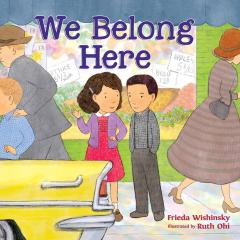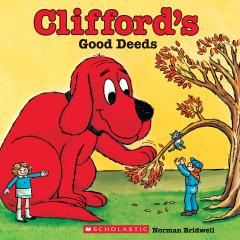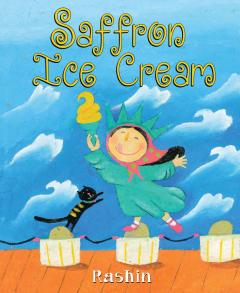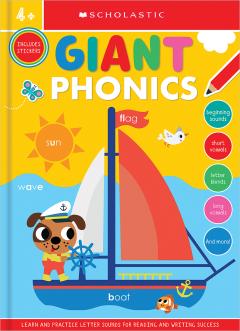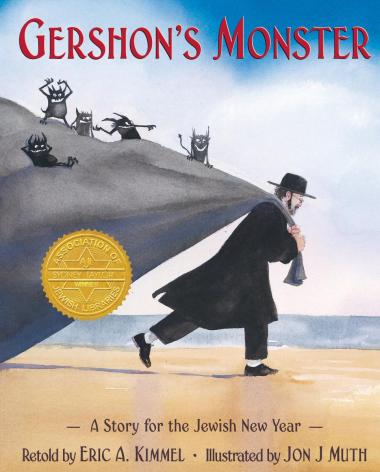
Gershon's Monster: A Story for the Jewish New Year: A Story for the Jewish New Year
About this book
Sydney Taylor Book Award Winner
Author Eric A. Kimmel Named Winner of 2024 Regina Medal for Distinguished Contribution to Children’s Literature
There was once a baker named Gershon who was a sinner. His sins were the common ordinary stuff; a few little lies, a broken promise, a temper lost for no reason. But unlike most people, Gershon never regretted what he had done. He never apologized or asked anyone's forgiveness. Why should he? He merely swept the little monsters up and tossed them into the celler. Then, once a year, on Rosh Hashanah, he would stuff them in a sack and throw them into the sea. Why should he bother asking anyone for forgiveness when getting rid of them was so easy?
It was only a matter of time, though, before Gershon's bad ways caught up with him. And they did come back to haunt him. One day, as his two children played by the sea, those sins he thought he'd gotten rid of had grown into a giant sea monster! Now they threatened what was most dear to him: his beloved children. Was it too late for Gershon to save them from his own mistakes?
Reviews
★ "Kimmel (Jar of Fools, p. 1287, etc.) is particularly skilled in refashioning the ritual and folklore of Judaism into widely accessible yet faith-filled retellings. Here he recounts a soul-satisfying Hasidic legend and incorporates the persona and teachings of the 18th-century Ba'al Shem Tov ("Master of the Good Name") Rabbi Israel ben Eliezer. Gershon, rude and self-absorbed "paid no attention to how he treated others and he didn't care. For he could shed his . . . thoughtless acts like a dog sheds hair." Before each Shabbat he swept his sins (personified as impish, black creatures) into his cellar. "And once a year, on Rosh Hashanah, he stuffed them into a sack and dragged them down to the sea." But Gershon and his wife were childless. Always seeking the quick fix, he blunders in to see a tzaddik, a wonder Rabbi. The Rabbi emphasizes with Gershon's wife but cautions Gershon: "Did you think you could live so thoughtlessly forever? The sea cries out because you have polluted her waters. (Y)our wife . . . will give birth to twins . . . They will be with you five years." Heedless, the ever-arrogant Gershon is convinced he can stave off the inevitable. Five years pass and his children, Sarah and Joseph, are playing on the seashore. Horribly, Gershon's sins coalesce into a huge, black sea monster that threatens their fragile lives: "On each scale was written one of Gershon's misdeeds." Horrified, he began to plead for forgiveness—for the first time in his life. God was merciful. He acknowledged Gershon's heartfelt act of t'shuvah—repentance—and the monster was transformed into a cleansing rain. And Gershon? Having returned to his better nature—he made amends, kept "his soul clean" and never saw the monster again. A deft watercolorist, Muth (Come on Rain!, 1999 ) is particularly skilled at limning personality thorough the telling gesture. The dark grays and blacks of Gershon's sins threaten the soft earth tones, lush greens, sunny yellows. The fluid, clear blues of the sea and the freshened horizon line communicate the gratitude, the exhilaration—and the freedom—of truly placing our sins behind us.Sustaining. --Kirkus Reviews, starred review
★ "Kimmel's crisp but lyrical retelling of this early Hasidic legend has a steady pace and mounting tension that makes this a text certain to receive heavy use as a readaloud or told story, but it is as a readalone that this title will have the greatest impact. Muth's watercolors add a powerful emotional subtext to this already moving tale. The visual characterization of Gershon, in prayer shawl and yarmulke, sweeping his impish misdeeds into the cellar has both pathos and humor; the subtle palette (pale blue, sandy brown, creamy yellow) is clean and evocative, providing a peaceful background against which the protagonist, dressed in black, contrasts with a solid power. The compositions are elegantly arranged, whether featuring close-ups of Gershon's emotional reactions or showing his small figure in black coat and hat dragging a huge sackful of sins to the sea. The monstrous result of Gershon's negligence is appropriately horrific (some readers may be reminded of Brinton Turkle's nightmare in Do Not Open, BCCB 12/18) as it looms over the beach, blotting out the light of the blue summer sky. Muth's illustrations for Come On, Rain! (BCCB 4/99) revealed him to be an artist of exceptional skill at visual interpretation of text; this title will ensure that reputation. An author's note gives background on the story and the Jewish traditions from which it comes." --Bulletin of the Center for Children's Books, October 2000, starred review
★ "This presentation of a Hasidic legend has everything a reader could want: a suspenseful story, an insightful lesson and brilliant pictures that accelerate the delivery of both. Centra to the plot is the custom of tashlikh, the ritual casting of sins into the water on the first day of Rosh Hashanah. Gershon the baker, "not always the best person he could be," begins to rely on this practice as a way of dealing with his mistakes: instead of apologizing and making amends, he sweeps his thoughtless deeds into the cellar every Friday and, on Rosh Hashanah, he stuffs them into a sack, drags it to the sea and tosses it in. Of course, he will learn true repentance--but not before he receives a cryptic prophecy from a sage and, much later, faces down the sea monster his sins have created. Relegating words like tashlikh to a meaty author's note (which also describes Jewish principles of t'shuvah, or repentance), Kimmel (Hershel and the Hanukkah Goblins) uses everyday language, letting the moral shine through his astute storytelling. The airy watercolor illustrations, loaded with period detail, transcend the particularities of the setting by virtue of Muth's (Come on Rain!) expansive imaginative vision. He enhances the comedy in the premise by painting the sins as tiny horned imps who jeer as they face Gershon's broom (they grow a bit nastier as the story advances), yet he leaves room for a humane depiction of Gershon, more self-absorbed than wicked, and for a psychologically canny and dramatic portrayal of the monster. A memorable work, welcome at any time of year." --Publishers Weekly, August 28, 2000 starred review.
"Kimmel is ably served by illustrator Muth, whose soft colored blues, grays, and beiges bring alive the watery landscape of Constantsa on the Black Sea in this quietly moralistic Hasidic tale. Muth uses the same gentleness that made Come On Rain (rev.7/99) so appealing, yet here his washes of color create a range of moods, from indifference to anger, from terror to calm. With confidence, Kimmel retells the story of Gershon, "not always the best person he could be,' who "shed(s] Ws mistakes and thoughtless acts like a dug sheds hair." Muth envisions these mistakes as tiny, inky gray monsters, which Gershon sweeps tip and pitches into the cellar. In several dynamic spreads, the black-hatted and suited Gershon bundles up these mischievous-looking. misdeeds and drags them, stuffed in a massive sack, down to the sea. The story, sounding very much like a folktale, centers on Gershon and his good wife, who are childless; the arrogant Gershon goes to a "wonder rabbi" who intercedes to grant the couple twins--but with a future caution: their fate will be caught up with their father's pride and selfishness. Kimmel and Muth both make much of the contrast between the innocent five-year-old children at the seashore and their father's monster who confronts them. Kimmel accents tire meaning of this tale in a thoughtful afterworld about the tradition of repentance at the Jewish New Year." --The Horn Book, Sept./ Oct. 2000
"In this retelling of a Hasidic legend, the baker Gershon never repents for any of his wrongdoings. Instead, on Rosh Hashanah, he gathers them together and throws them into the sea. When he and his wife seek help for their childlessness, Gershon visits a tzaddik, or "wonder rabbi." The rabbi writes a charm and tells the man it will bring him and his wife twins but due to, his careless acts they will die on their fifth birthday. When the day arrives, Gershon is able to save his children from the monster created by his sins by truly repenting. Despite its obvious moral, the story flows well, and Kimmel's language glows, while retaining the fla vor of a traditional tale. The watercolor illustrations work well, with the baker's sins represented as small, black, ghoulish monsters and the beast created from the sum of his misdeeds as a looming, serpentine sea monster. Muth brings Gershon to life with a truly human expressiveness. The characters are depicted with the traditional Hasidic side curls' and tallith hanging out of their shirts, rooting them firmly in the Jewish tradition. Kimmel's light hand makes the lessons easy to take, and despite repetitions of the message, the telling remains an enjoyable read." --School Library Journal, September 2000
"Kimmel has a new book for all of the elementary librarians who loved reading aloud Herschel and the Hanukkah Goblins (Holiday House, 1989). Kimmel first heard this story from his grand- mother, when he was a little boy, and here retells the Jewish New Year's tale of a man who "was not always the best person he could be." The man never treated people kindly, and he never apologized for, or cared about, his thoughtless behavior. This wasn't a wife of told' Gershon that God was angry with him, and that this was God's judgment, but Gershon eventually convinced the rabbi to help him. Through the love of his children, Gershon is taught a powerful lesson that cleanses his soul. The charm of this legend is enhanced by Muth's watercolor representations. Readers will enjoy the personifications of Gershon's unkind behaviors-bad little creatures with big teeth. This wonderful holiday story would complement any folktale section and can be used any time during the year to help children ages 7-10 face some of their own bad behavior." --Library Talk, March/April 2001
